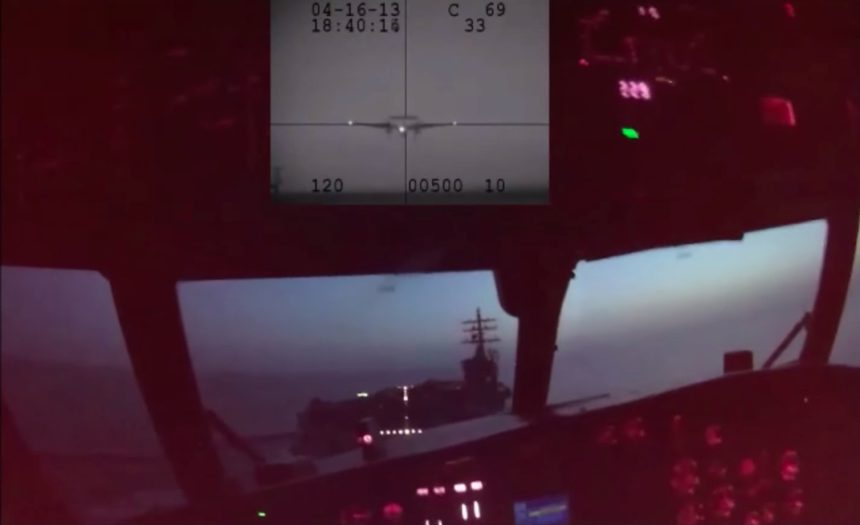E-2C Hawkeye Night Carrier Landing from the cockpit. With radio comms.
The following video was filmed on Apr. 16, 2013, and shows a night (let’s say a sunset) carrier arrested landing by a VAW-121 E-2C Hawkeye’s pilot at his last night trap with the squadron.
The video is particularly interesting as it includes radio comms (both with the ship and Landing Signal Officers), the PLAT (Pilot Landing Aid Television) from about a mile to the touchdown.
The PLAT system gives a hint of the horizontal visibility on the flight deck and the “C” (or flashing “F”) in the upper screen of the PLAT is for “Clear” deck, or “Foul” deck, whereas the “W” in the bottom would mean “Waveoff.”
The pilot in command is the one in the left seat (with the camera), whereas the pilot in the right seat is handling radio calls, coordination with the CIC (Combat Information Center) crew. You can also hear the chat with the LSOs (Landing Signal Officers) providing final approach assistance to aircraft.
Enjoy.
Related articles
















